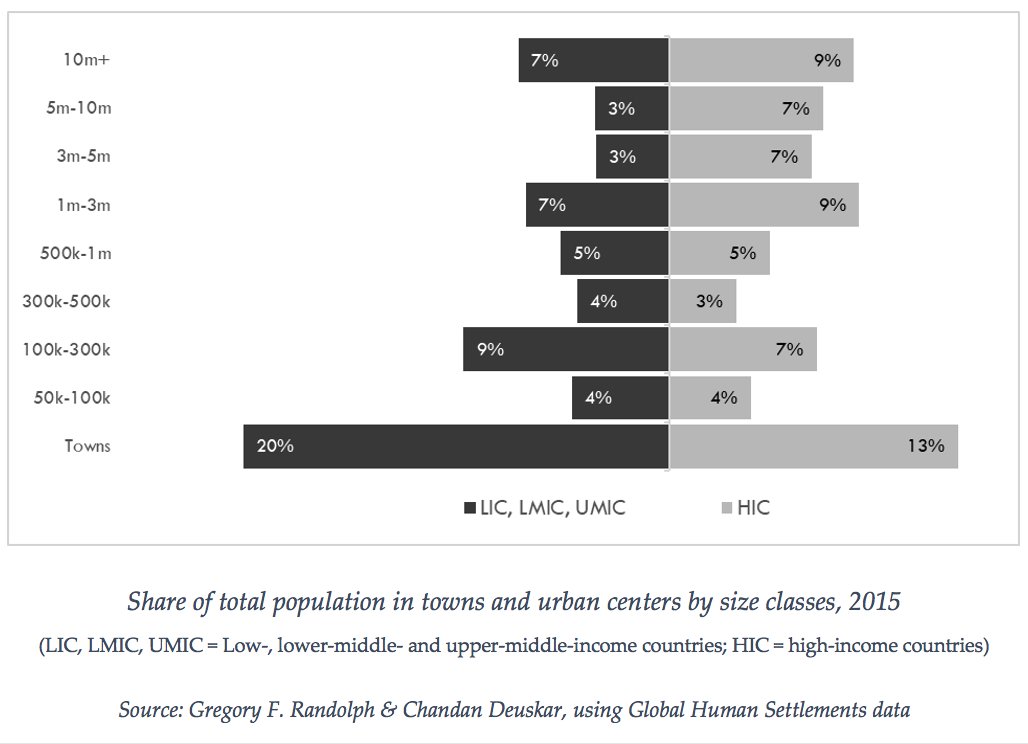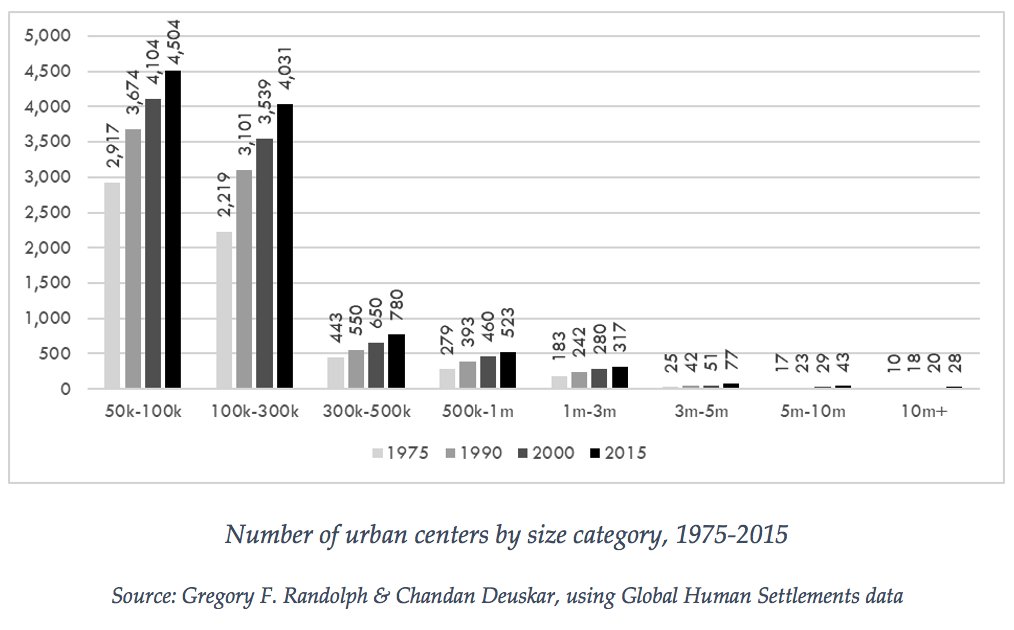
Chandan Deuskar (@CD_planner) & I have co-authored a newly published paper on global #urbanization patterns and their implications for #planning in the Journal of Planning Education and Research (@JPER7). A thread on our findings and arguments. (1/10)
journals-sagepub-com.libproxy1.usc.edu/doi/10.1177/07…
journals-sagepub-com.libproxy1.usc.edu/doi/10.1177/07…
Our core questions: How are #urban populations distributed across settlement systems in rapidly urbanizing countries? How are those distributions changing? What does it mean for #urbanplanning? (2/10)
We use Global Human Settlements (GHS) data from @EU_Commission - a marked improvement on UN stats. Not only does GHS use harmonized definitions across countries, it's better for analyzing the size and growth of towns and small cities. (3/10) @DijkstraLewis ghsl.jrc.ec.europa.eu
GHS data show that about 3/4 of the world lives in urban centers, towns and suburbs. And this share is remarkably similar across lower-middle-, upper-middle- and high-income countries. The world is already more urban than UN statistics indicate. (4/10) @NYUSternUP @UrbanTheoryLab
Contrary to conventional wisdom, urban populations are *less* concentrated in megacities (10mil+) in the #GlobalSouth than North. Towns (semi-dense small urban settlements) and cities of < 1mil are esp important in GS urban systems. (5/10) @zerahmh @MuktaNaik @EricDen49725991 

Between 1975 and 2015, the world added 18 new megacities (10mil+) and *3,399* cities with populations of 50K-300K. 3,153 of these are in the #GlobalSouth. (6/10) @CitiesAlliance @The_IGC @IGC_CtW @IIEPGW @CGDev @IIED 

But are the biggest cities growing faster? Not really. The megacities of 2015 hosted 6% of the world's population in 1975 and 7% by 2015. Cities of 1-10mil in 2015 grew from hosting 13 to 15%. (7/10) #China drives most of this growth. @LSECities @WBG_Cities @UNHABITAT
What does this mean for #urbanplanning in the #GlobalSouth? We need to look beyond the metropolis. The major 21st-century challenge is how to plan for a large number of small places, not just for a small number of large places. (8/10) @Dsatterthwaite @AndrewRumbach @RafTuts @WFGP
Small cities & towns in the South have few planners, if any. No expansion in planning higher ed could be fast enough to meet this challenge. So what do we do? We propose reviving the idea of "barefoot planning" developed by H.P. Oberlander of @UBCscarp & others in the 80s. (9/10)
What is #barefootplanning? An approach bridging grassroots engagement & technical planning expertise—training a cohort of community members to play roles usually reserved for professional planners. This flexible framework could be adapted to diverse small-city contexts. (10/10)
For support/inspiration/engagement, thanks to: @drschweitzer @JDelaRocaUSC @TamJamme @USC_SLAB @The_ACSP @needycities. May be of interest to @Marlon_Boarnet @dcsloane53 @gboeing @gandhisahil @PriyaManwaring @DrSeanFox @ChinmayTumbe @Richard_Florida @asher_ghertner @keynesianr
• • •
Missing some Tweet in this thread? You can try to
force a refresh


